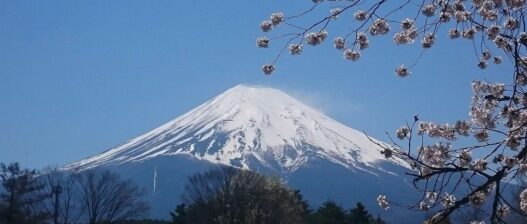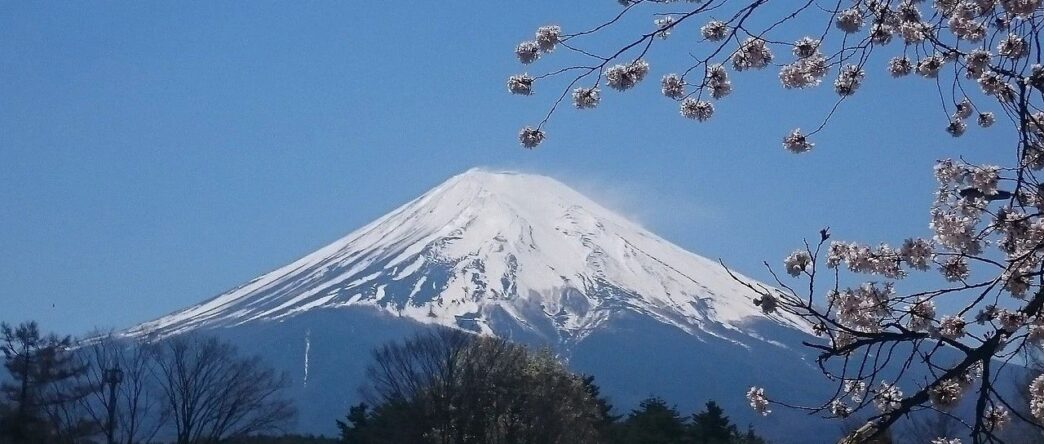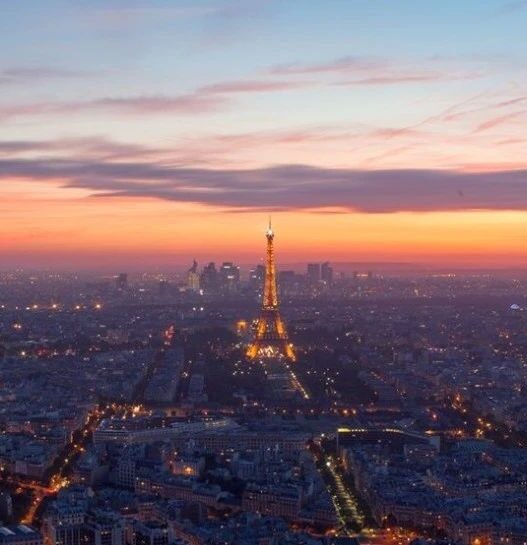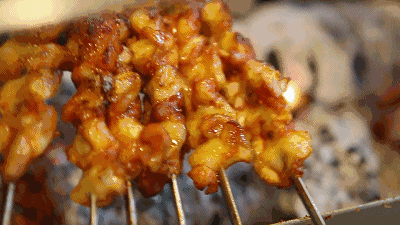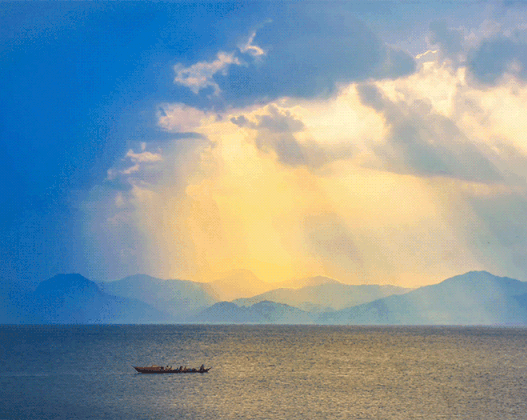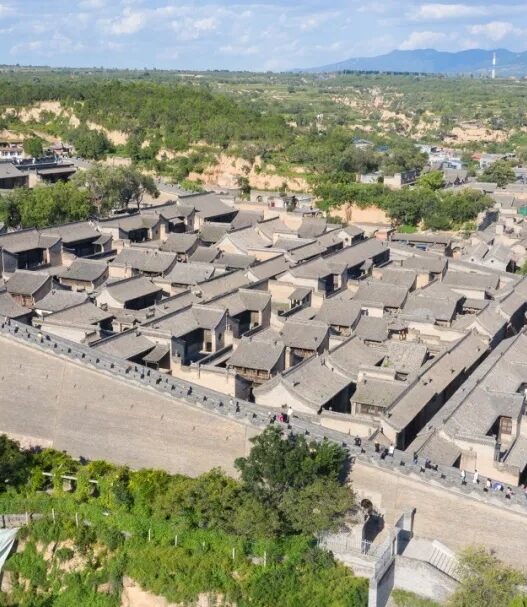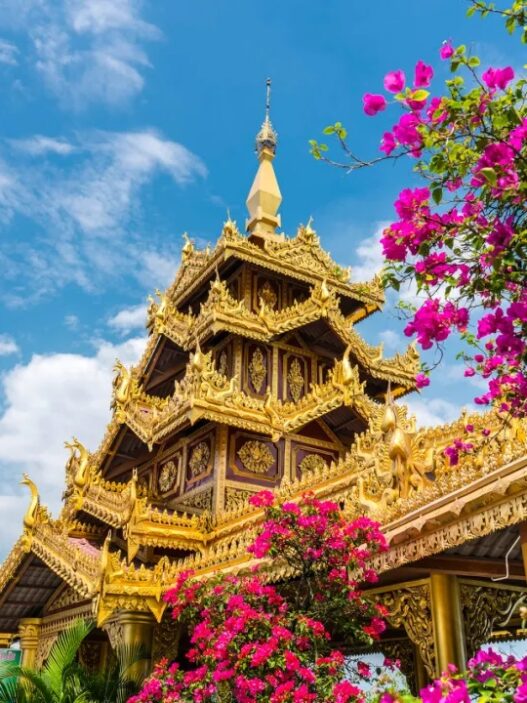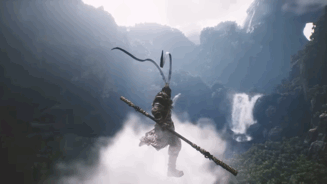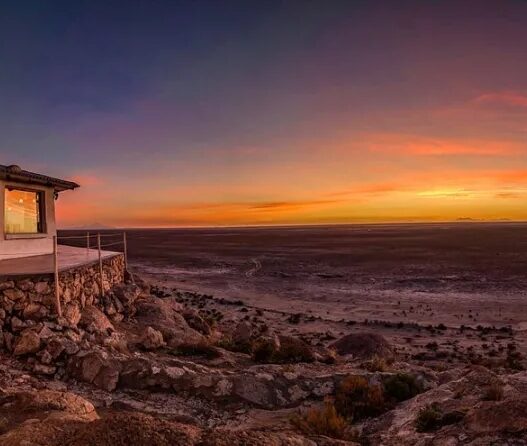Japan’s cherry blossoms are world-famous, but their blooming period is extremely short. There’s a Japanese saying, “Sakura lasts for seven days,” meaning that a single cherry blossom lasts about seven days from opening to falling, and an entire tree blooms for around 16 days. They fall overnight without any delay. After showcasing all their beauty, they quickly fade away, a trait the Japanese greatly admire. Thus, cherry blossoms are considered Japan’s national flower, symbolizing passion, purity, and nobility.
Viewing cherry blossoms, known as “Hanami” in Japanese, is a tradition. The custom of Hanami originated from flower festivals, flower gatherings, flower banquets, and flower dances during the Nara period. Since the Heian period, it has become a popular pastime among the Kyoto court nobility. Every year, professional weather websites predict the cherry blossom blooming times for different regions.
Hanami is also one of the most popular activities for foreign visitors in Japan. Nowadays, people try to capture its beauty in various ways, with taking photos being the most direct method. Here are some famous cherry blossom viewing spots across Japan!
Tokyo
Meguro River
Viewing Period: March 19 – March 28
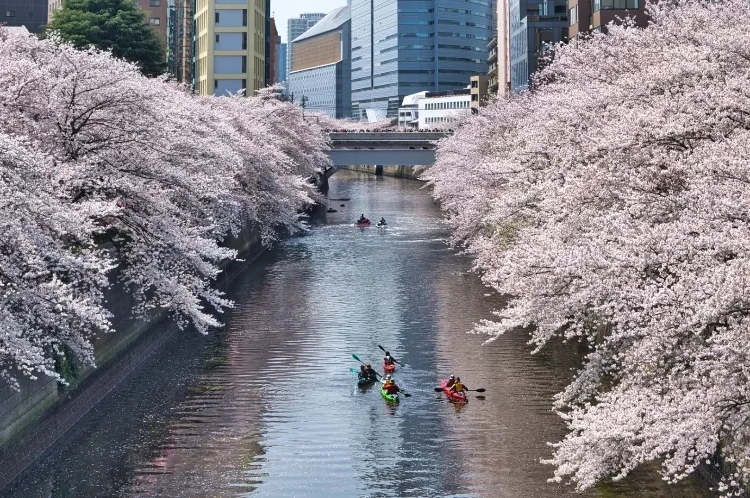
Consistently ranking at the top of Tokyo’s cherry blossom viewing spots, it has been voted by the Japanese as a must-visit place for Hanami. The riverbank stretches about 3.8 kilometers, lined with approximately 800 cherry trees. The petals fall into the river, creating a spring-only pink river, and because the scenery is so beautiful, it’s been voted the best spot for cherry blossom viewing. The cherry blossoms along the riverbank form a pink arch, and the night-time cherry blossoms are also famous, becoming more enchanting when lit up, contrasting with the bright daylight.
Ueno Park
Viewing Period: March 21 – March 28
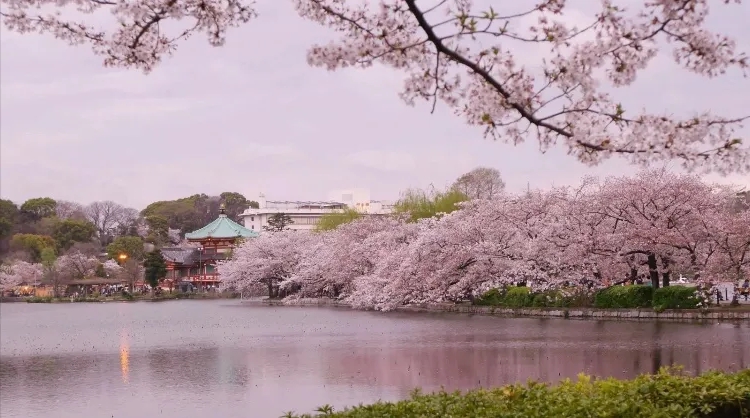
A traditional cherry blossom viewing spot, Ueno Park is Japan’s first public park with deep historical and cultural significance and beautiful scenery. Since the Edo period, it has been a renowned Hanami spot, with about 50% of its cherry trees being Somei Yoshino, totaling 1,100 trees. During the peak bloom, it’s incredibly beautiful. With attractions like the art museum and zoo nearby, and shopping areas like Ameyoko, it’s a great place for families to enjoy Hanami. At night, under the glow of lanterns, it becomes even more dreamlike. Strolling through the park at night, the traditional architecture and the captivating cherry blossoms under the lights offer a unique experience.
Shinjuku Gyoen
Viewing Period: March 17 – March 30
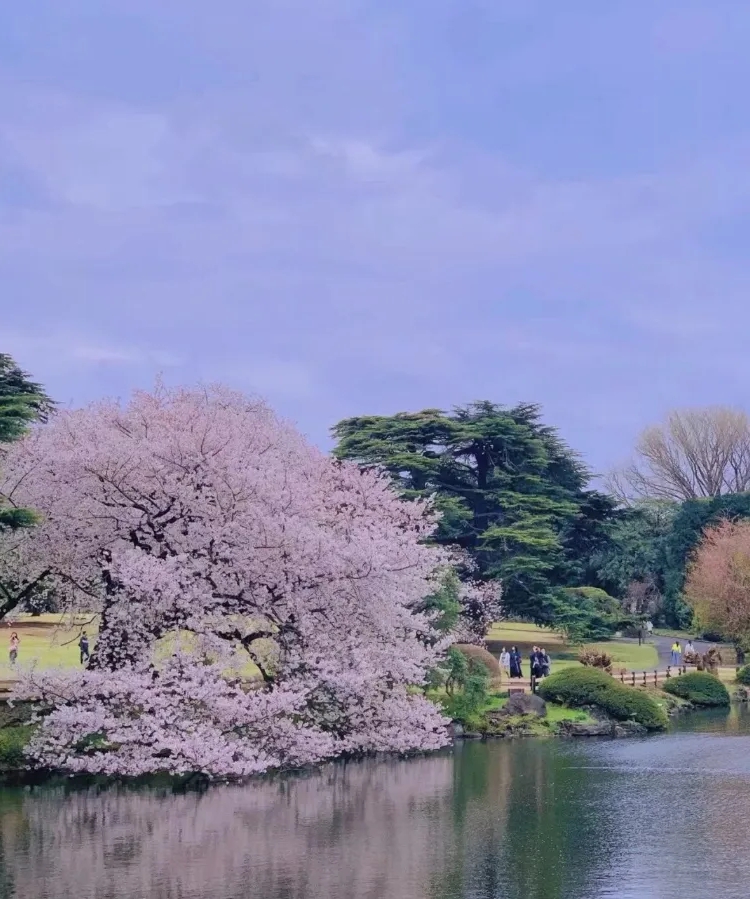
The setting for the movie “The Garden of Words,” Shinjuku Gyoen boasts the richest variety of cherry blossoms in Tokyo. If you want to experience the beauty of different cherry blossoms at once, this is the ideal place. With over 65 species and approximately 1,300 trees, if you want to enjoy cherry blossoms and do some shopping, Shinjuku Gyoen is a must-visit! It’s just a 10-minute walk from popular shopping districts in Shinjuku. It’s recommended to grab some food from a convenience store or restaurant and bring a picnic mat to join the Japanese in a picnic and enjoy the Hanami fun.
Chidorigafuchi
Viewing Period: March 22 – March 29
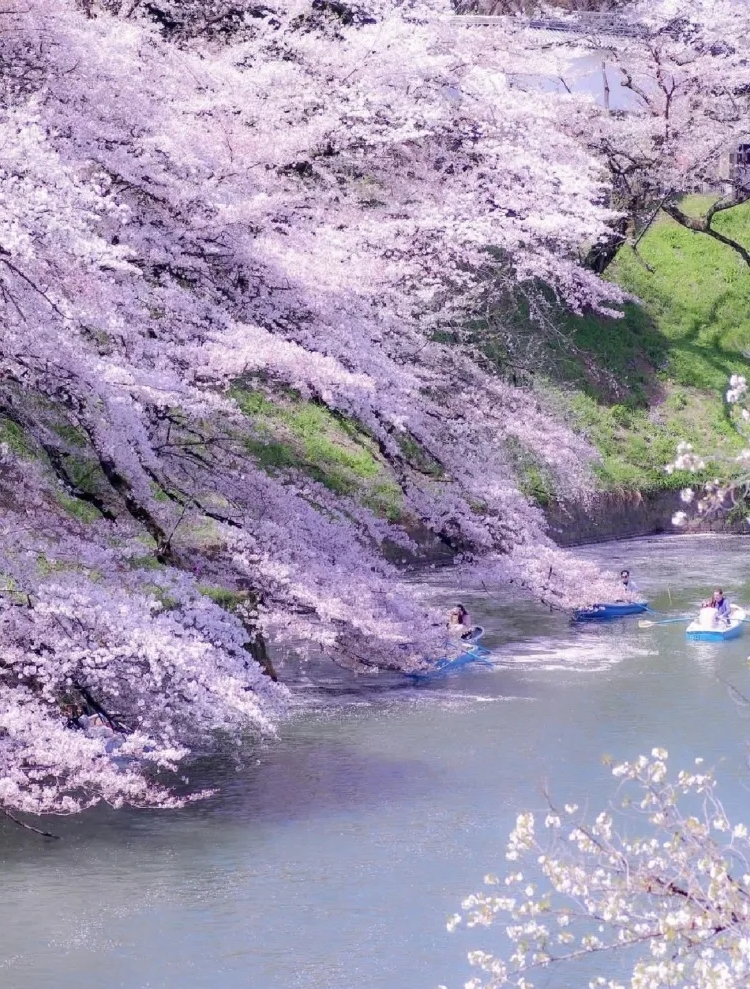
Another popular cherry blossom spot among the Japanese, where you can look up to see rows of beautiful cherry trees. The most popular way to enjoy the scenery here is by renting a small boat and gently paddling through the water covered with pink petals, experiencing a fairy-tale-like scene. The reflection of the lake and the cherry blossom rain make the sky seem pink. A must-visit for cherry blossom viewing in Tokyo!
Sumida Park
Viewing Period: March 24 – April 1
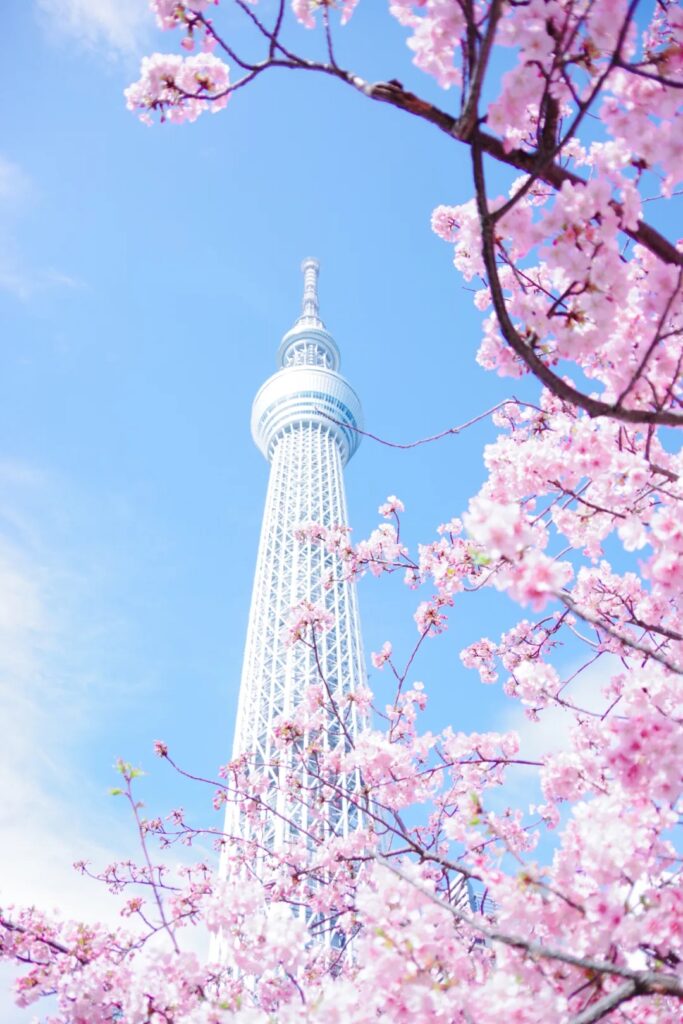
Sumida Park is one of the must-visit cherry blossom spots in Tokyo, attracting many visitors every year. The cherry trees line the Sumida River, creating a breathtaking sight, with chances to capture photos with Tokyo Skytree at any time of day. During the cherry blossom season, the Skytree area hosts cherry blossom festivals and food events. Cherry blossom-themed limited dishes and desserts make an appearance, satisfying both the eyes and the palate!
Arai-Gochome Pedestrian Bridge
Viewing Period: A niche cherry blossom spot; refer to the same city’s viewing times.
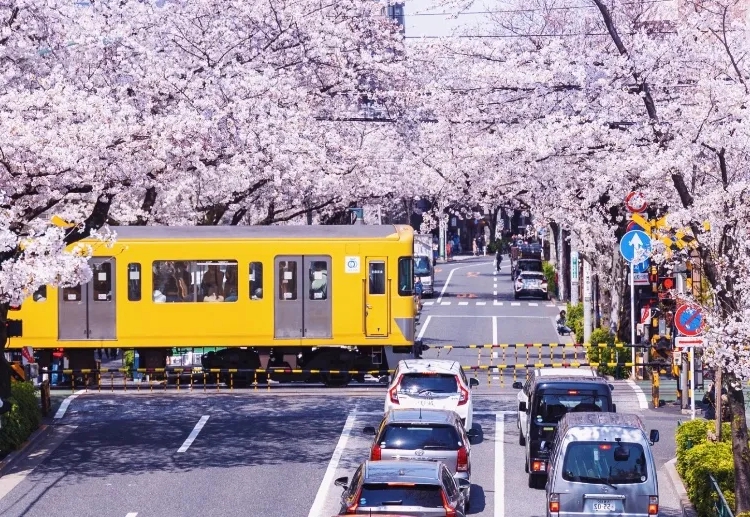
This pedestrian bridge, located next to Arai Yakushi Park, allows for unique photography opportunities as trains pass by below. The combination of the fast-moving yellow trains and the white-pink cherry blossoms is quite healing!
Osaka
Viewing Period: March 26 – April 3
Osaka Castle Park
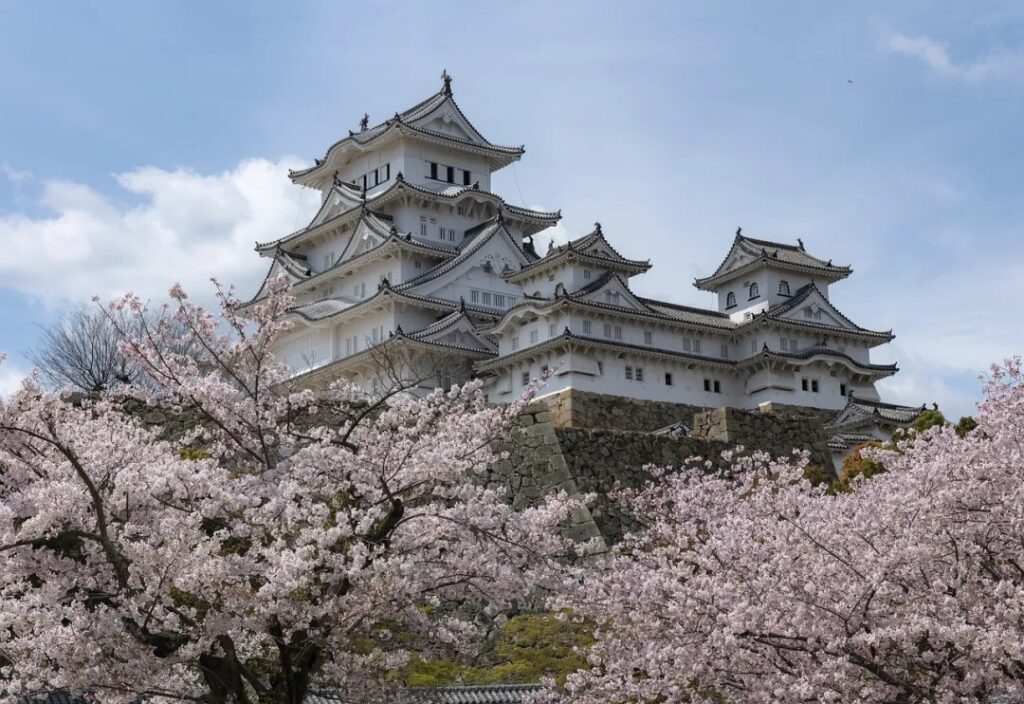
Osaka Castle, along with Himeji Castle and Nagoya Castle, is one of Japan’s three great castles. With over 3,000 cherry trees in Osaka Castle Park, it’s spectacular when they are in full bloom. If you find it too crowded during the day, you can also visit in the evening for the night cherry blossoms. Every cherry blossom season, the park is filled with various street foods like takoyaki, okonomiyaki, yakisoba, and candy apples. You can enjoy a picnic under the cherry blossoms, savoring delicious food while taking in the majestic architecture and cherry blossoms.
Kema Sakuranomiya Park
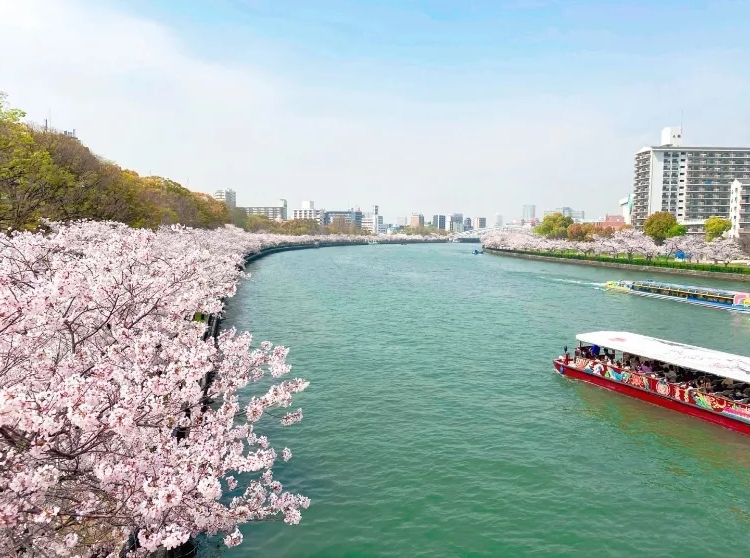
Kema Sakuranomiya Park, spanning Osaka’s Kita and Miyakojima wards, is famous for its approximately 4 kilometers of riverbank lined with cherry trees. Over 4,000 cherry trees turn the area into a pink dream, perfect for strolling, taking photos in kimono, or simply enjoying the scenery. Every year, a large number of visitors come to walk and appreciate the flowers, making it a cherry blossom spectacle.
Kyoto
Viewing Period: March 24 – April 2
Yodo River Park in Yawata City – Seki-Butsuke Embankment
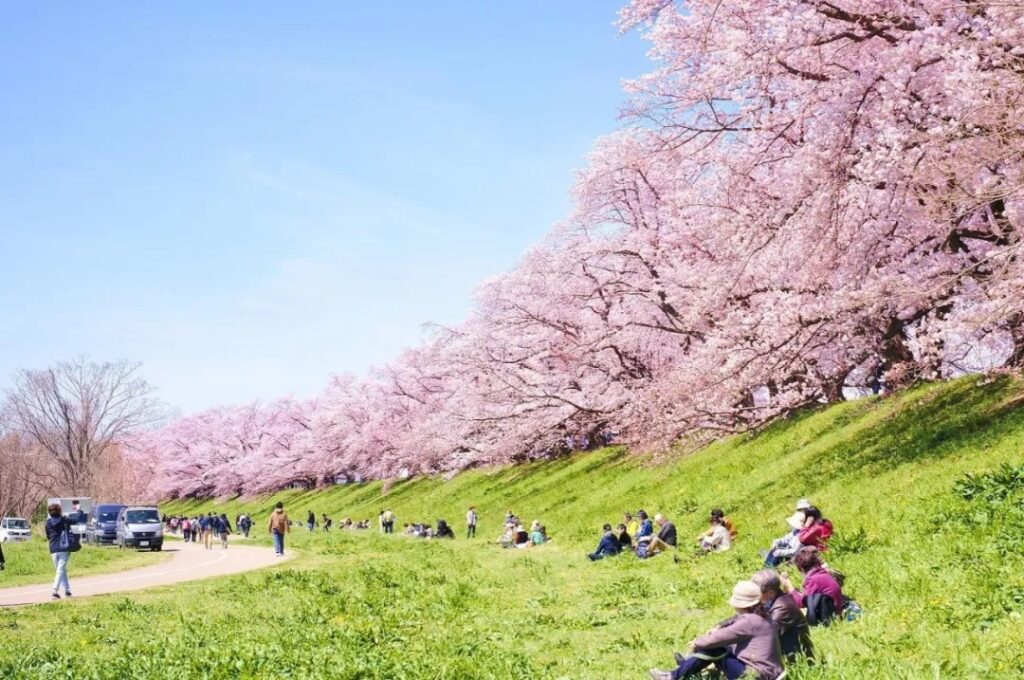
You’ve probably heard of the famous Seki-Butsuke Embankment in Yawata City, Kyoto. This one-kilometer stretch lined with hundreds of cherry trees in full bloom is a sight that leaves all who see it in awe. When you come to Seki-Butsuke Embankment to view the cherry blossoms, the gentle breeze carries the petals down to the ground, creating a truly magical scene. However, in recent years, Seki-Butsuke Embankment has become increasingly popular. If you want to secure a good spot for a picnic under the cherry trees, it’s advisable to arrive early to avoid the crowds.
Philosopher’s Path
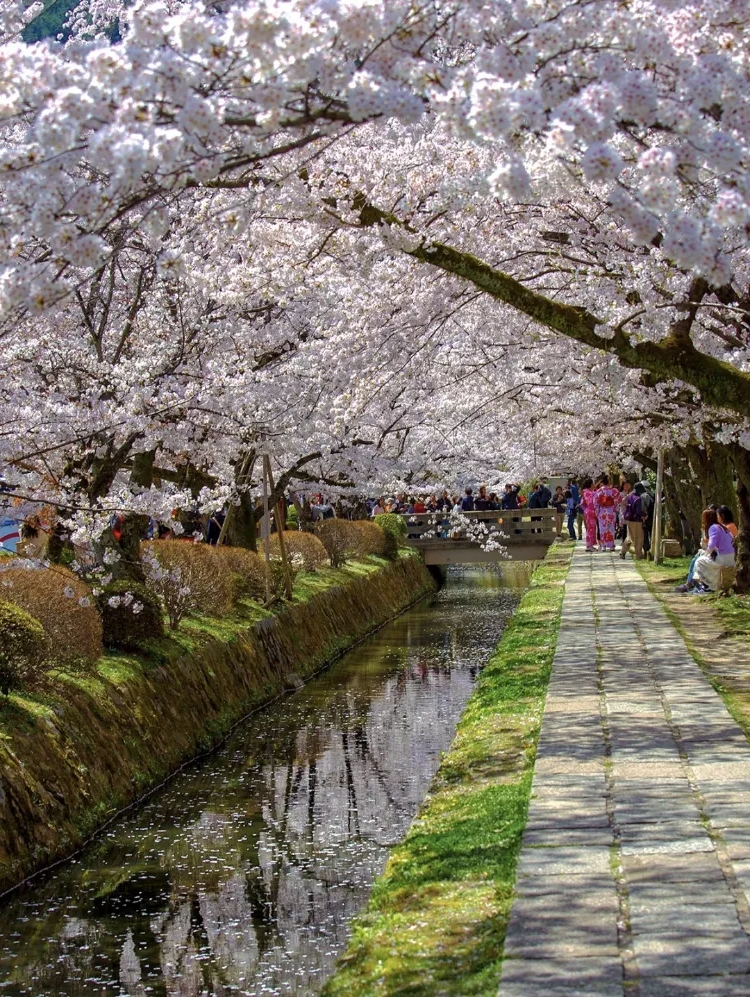
The Philosopher’s Path is arguably one of the most famous cherry blossom viewing spots in Kyoto. If you’ve missed it, you can’t say you’ve truly experienced cherry blossom viewing in Kyoto! Located in Kyoto’s Sakyo Ward, it’s considered by locals to be one of the areas with the most traditional cultural beauty, where the old houses, narrow streets, and blooming cherry trees complement each other, creating a scene that captivates the soul. However, like many popular spots, the Philosopher’s Path is crowded with visitors. If you want to enjoy a moment of tranquility, it’s wise to head there early in the morning.
Heian Shrine
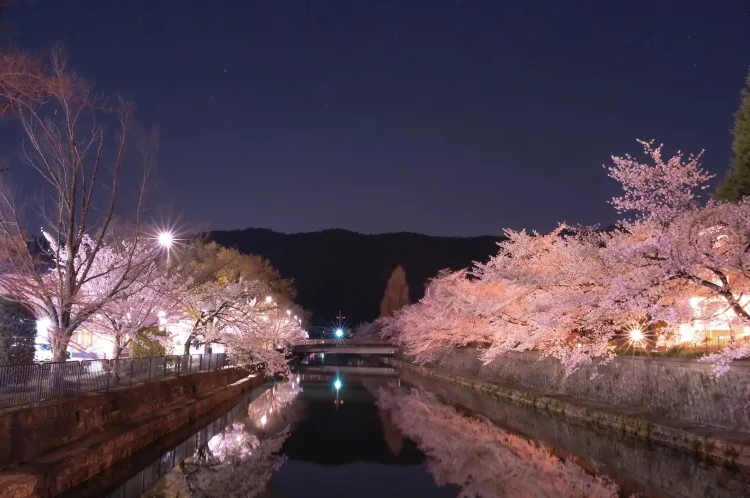
Heian Shrine is most famous for its Weeping Cherry Garden. These weeping cherries bloom later than the Somei Yoshino, so even if you arrive in Kyoto during the latter half of the cherry blossom season, there’s no need to worry. The season for Heian Shrine’s weeping cherries is quite spectacular, with their slightly pink petals hinting at a mature, elegant beauty. I highly recommend attending the night cherry blossom concert held at Heian Shrine every early April. Over four consecutive evenings, four different musicians from Japan and abroad perform, allowing you to enjoy the cherry blossoms with beautiful music, creating an indescribably wonderful experience.
Arashiyama Cherry Blossom Tunnel
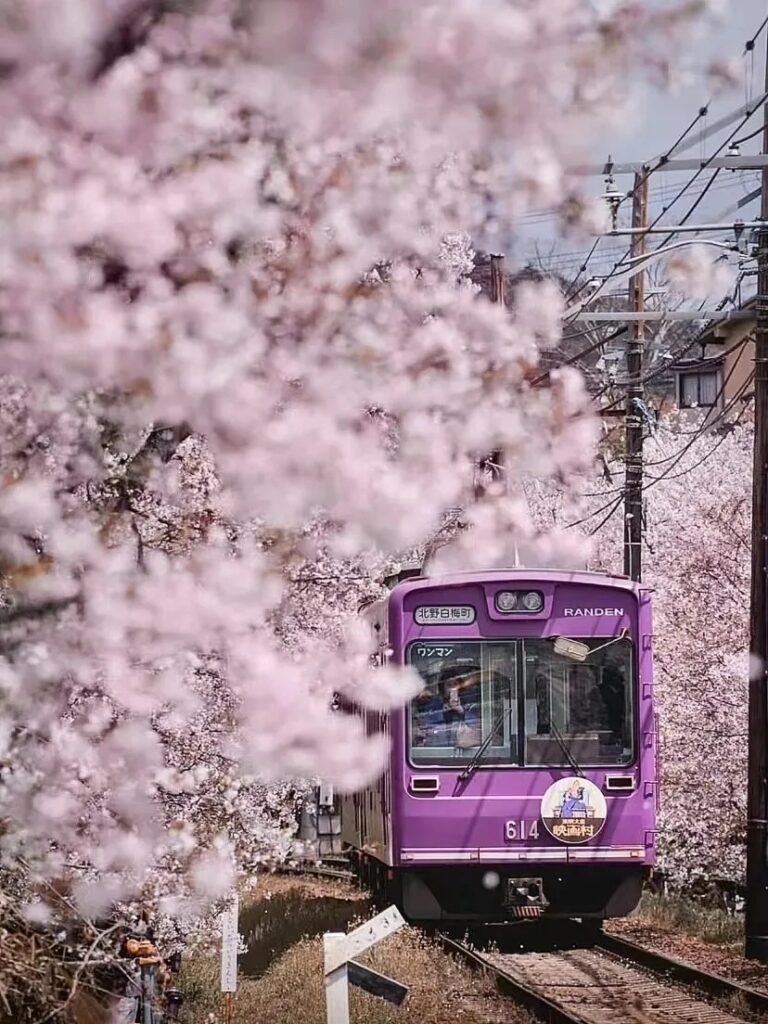
Arashiyama is renowned for its cherry blossom viewing in spring and its autumn foliage, making it a must-visit in Kyoto! The most popular way to enjoy cherry blossoms in Arashiyama is undoubtedly the Cherry Blossom Train – the Cherry Blossom Tunnel. Whether you’re a train enthusiast or not, once you’ve seen the breathtaking photos of the vintage train slowly passing through the cherry blossom forest, it’s hard to forget. The Cherry Blossom Tunnel refers to the section of the Arashiyama Electric Railway’s Kitano Line between Utsunomiya and Narutaki, where cherry blossoms bloom on both sides of the tracks, creating a dreamlike tunnel. There are several fixed photo spots around the railway, and staff are there to guide visitors, so you don’t have to worry about finding the right place. It’s like stepping into a Japanese animation, fulfilling every girl’s cherry blossom fantasy.
Nara Prefecture
Viewing Period: March 26 – April 3
Yoshino Mountain
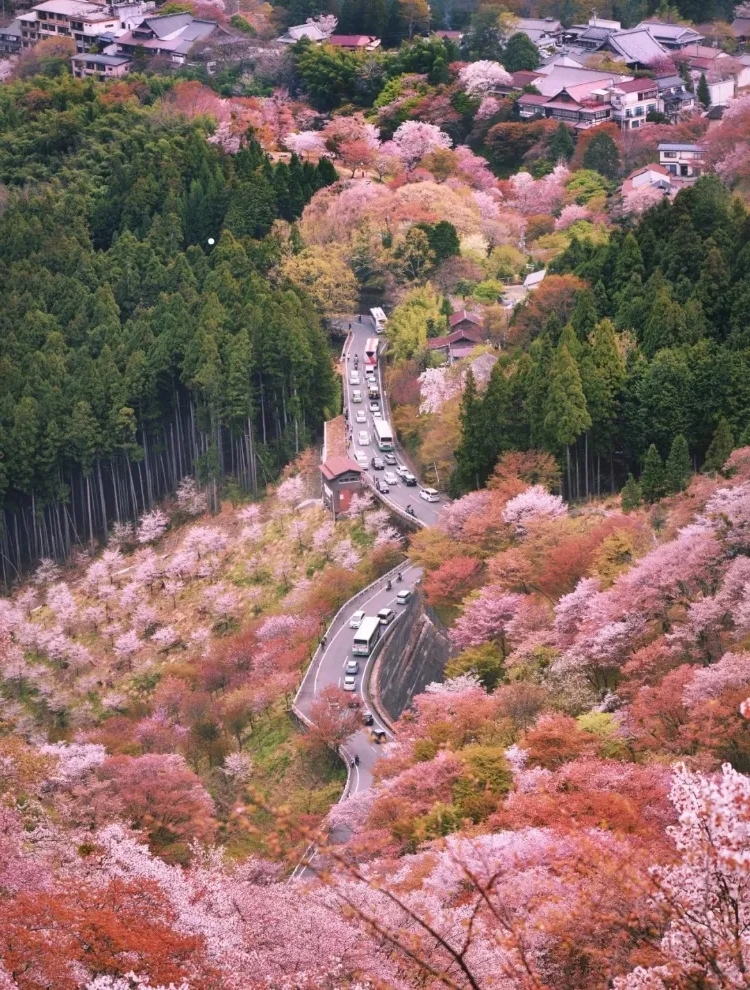
Yoshino Mountain, Japan’s premier cherry blossom viewing site, transforms into a pink fairyland with 30,000 cherry trees during the season. In spring, the entire mountain is covered with pink cherry blossoms, known as “Yoshino Senbonzakura.” Yoshino Mountain has been famous since the Heian period and was designated a UNESCO World Heritage site in 2004.
Nara Park
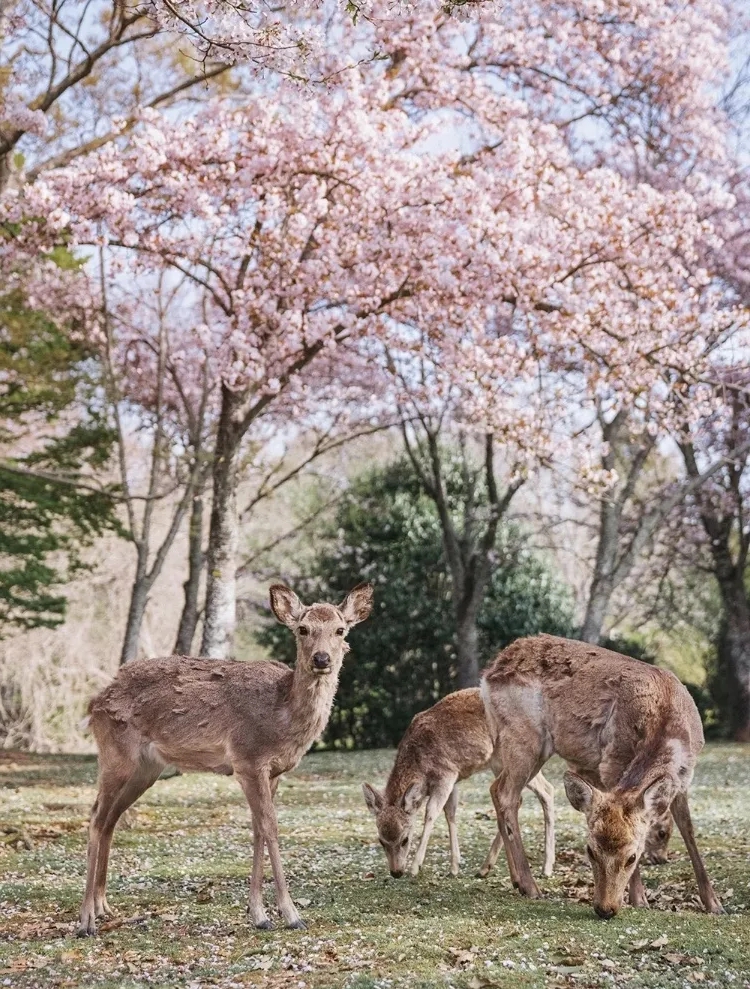
A must-visit spot in Nara, Nara Park includes temples and shrines like Todai-ji, Kasuga Taisha, and Kofuku-ji. In spring, you can enjoy about 1,700 different species of cherry blossoms like Nara Yaezakura, Somei Yoshino, Yamazakura, and Shidarezakura. It’s the best place to capture photos of adorable deer amidst the beautiful cherry blossoms!
Sabo River
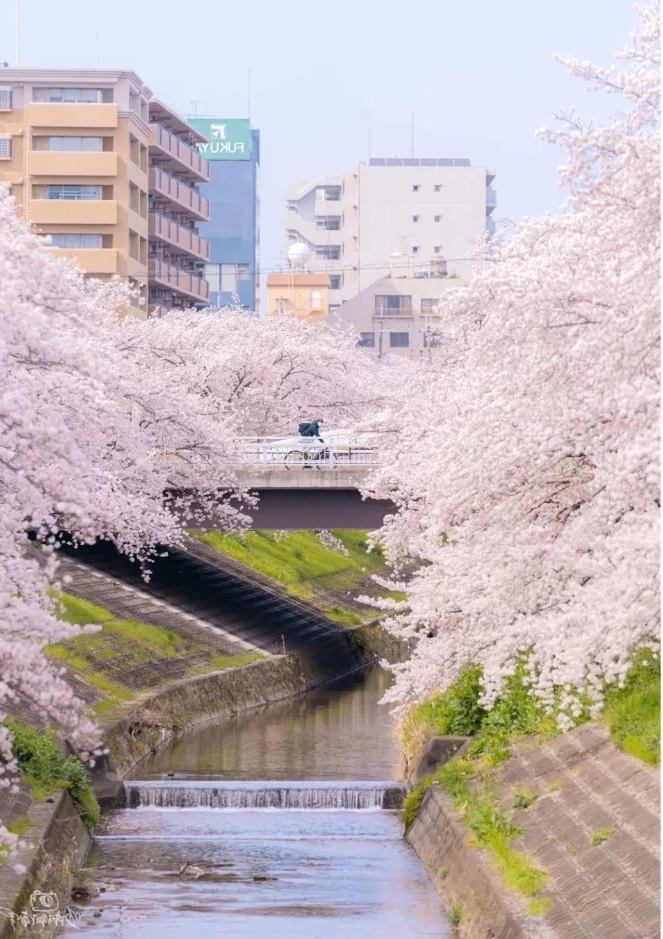
Just as Tokyo has Meguro River, Nara has Sabo River! Along its banks, over 5 kilometers of cherry trees are planted, offering a romantic experience whether you’re resting by the river or walking along the embankment. The local residents decorate the riverbanks with various lanterns for night viewing. Although not as famous as Nara Park or Yoshino Mountain, it’s convenient, less crowded, and a hidden gem for cherry blossom viewing.
Fukuoka Prefecture
Maidashi Park
Viewing Period: March 23 – April 1
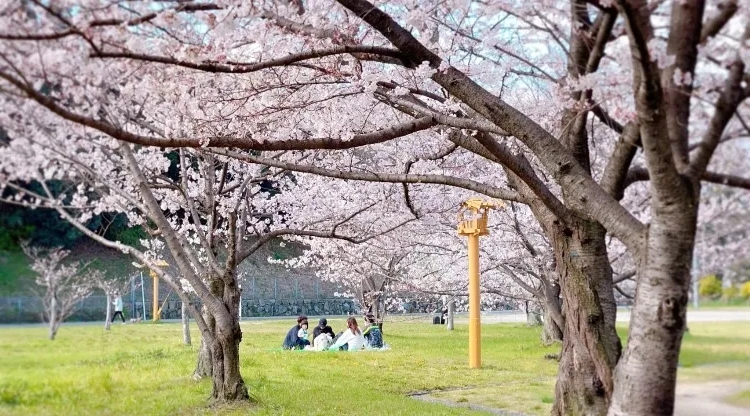
Maidashi Park is the most popular and famous cherry blossom viewing spot in Fukuoka City, especially when viewed from the ruins of Fukuoka Castle from the Edo period. With around 1,000 trees and 20 varieties of cherry blossoms, it’s a breathtaking sight! During late March to early April, the Fukuoka Castle Cherry Blossom Festival is held, with nighttime lighting adding to the mystical beauty.
Hokkaido
Hokkaido’s cherry blossoms bloom later, typically from late April to mid-May, offering a prolonged cherry blossom season if you miss the earlier ones.
Hakodate Goryokaku Park
Viewing Period: April 26 – April 30
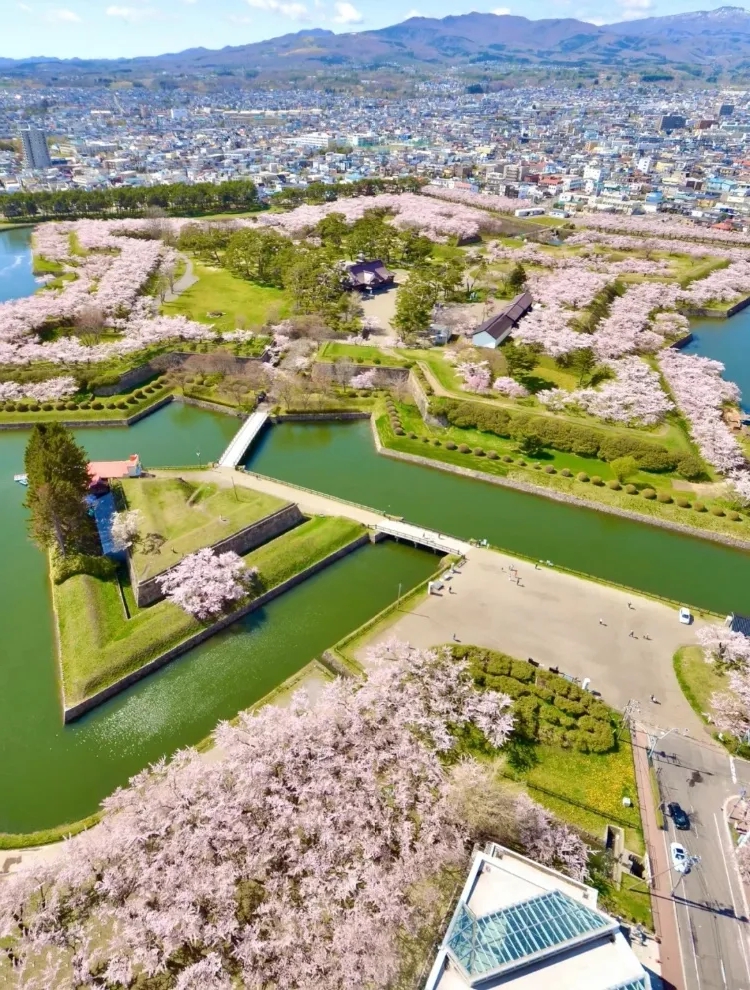
Hakodate’s famous Goryokaku Park, besides being the historical stage of the Battle of Hakodate, is also a popular spot for cherry blossom viewing in Hokkaido. With about 1,600 cherry trees surrounding the star-shaped fort, the view from Goryokaku Tower is breathtaking. The blooming period coincides with Japan’s Golden Week, and the park is lit up at night, allowing for a romantic night cherry blossom experience!
Nijumai-dori Cherry Blossom Avenue
Viewing Period: May 3 – May 6
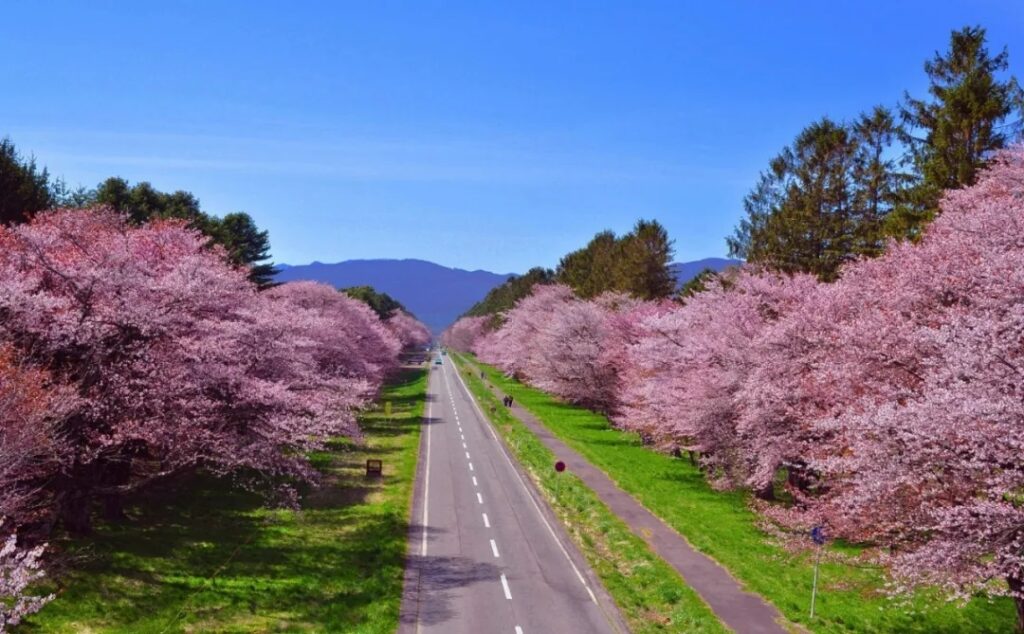
Located in Shizunai Town, Hokkaido, this 7-kilometer stretch is the largest cherry tree-lined road in Hokkaido and a recommended cherry blossom viewing spot by locals. Originally developed for a visit by the Japanese Imperial Family in 1916, it was named for the 20-meter (about 36 feet) intervals between the trees. With around 3,000 cherry trees, mostly the slightly reddish Ezo Yamazakura.
Tohoku Region
Shiroishi River Embankment One Thousand Cherry Trees
Viewing Period: April 4 – April 9
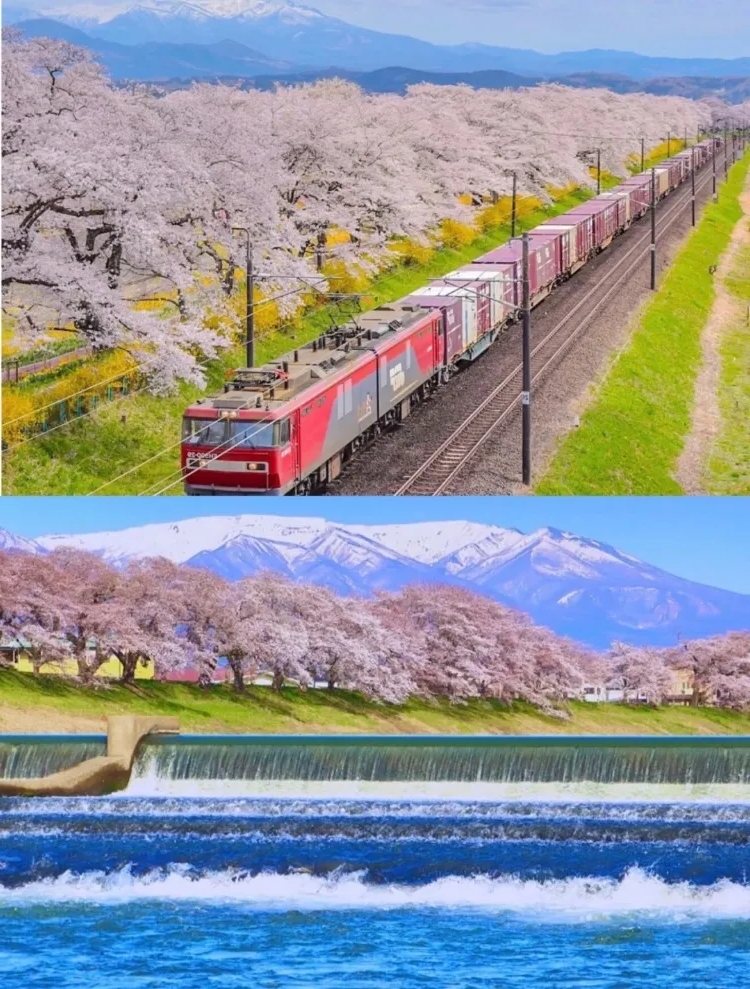
The top cherry blossom viewing spot in Miyagi Prefecture, the Shiroishi River Embankment boasts 8 kilometers of riverbanks lined with over 1,200 cherry trees. The endless rows of blooming cherry blossoms reflected in the river, with snow-capped mountains in the distance, offer a majestic view not found in urban areas.
Okayama Prefecture
Tsuyama Castle・Kakuzan Park
Viewing Period: March 27 – April 3
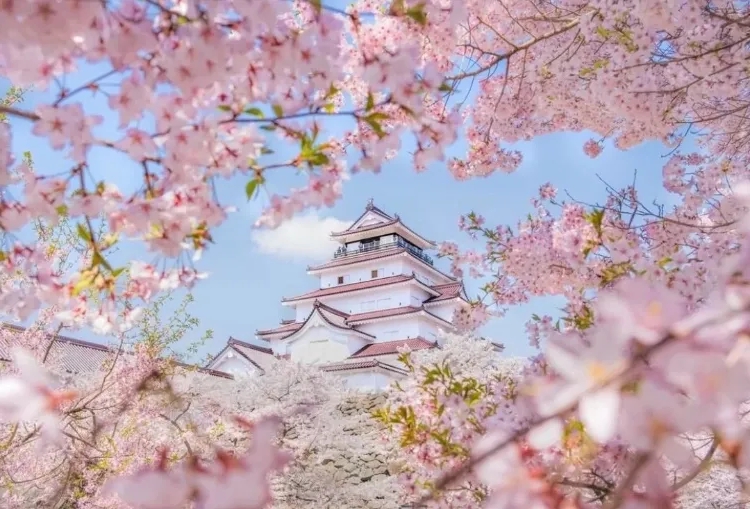
A popular cherry blossom spot in Okayama, Tsuyama Castle (Kakuzan Park) is one of Japan’s “100 Famous Castles” during the cherry blossom season. Built over 400 years ago, it has become a symbol of Tsuyama City. The castle and its surroundings are planted with over 1,000 cherry trees, offering stunning views in spring.
Okayama Korakuen・Asahi River Cherry Blossom Road
Viewing Period: March 26 – April 3
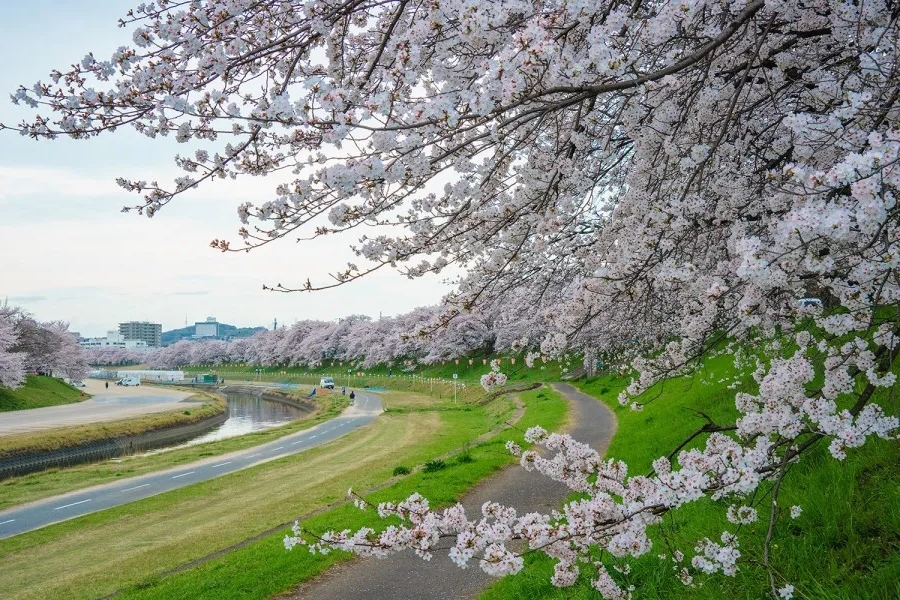
The east bank of the Asahi River, flowing in front of Okayama Castle and Okayama Korakuen, is lined with 1,300 meters of cherry trees, totaling about 200 trees. Known as one of the most famous cherry blossom viewing spots in Japan, it’s a must-visit in Okayama City. At night, the cherry trees are illuminated, creating a dreamy, romantic atmosphere.
Yamanashi Prefecture
Arakura Sengen Park
Viewing Period: April 7 – April 13
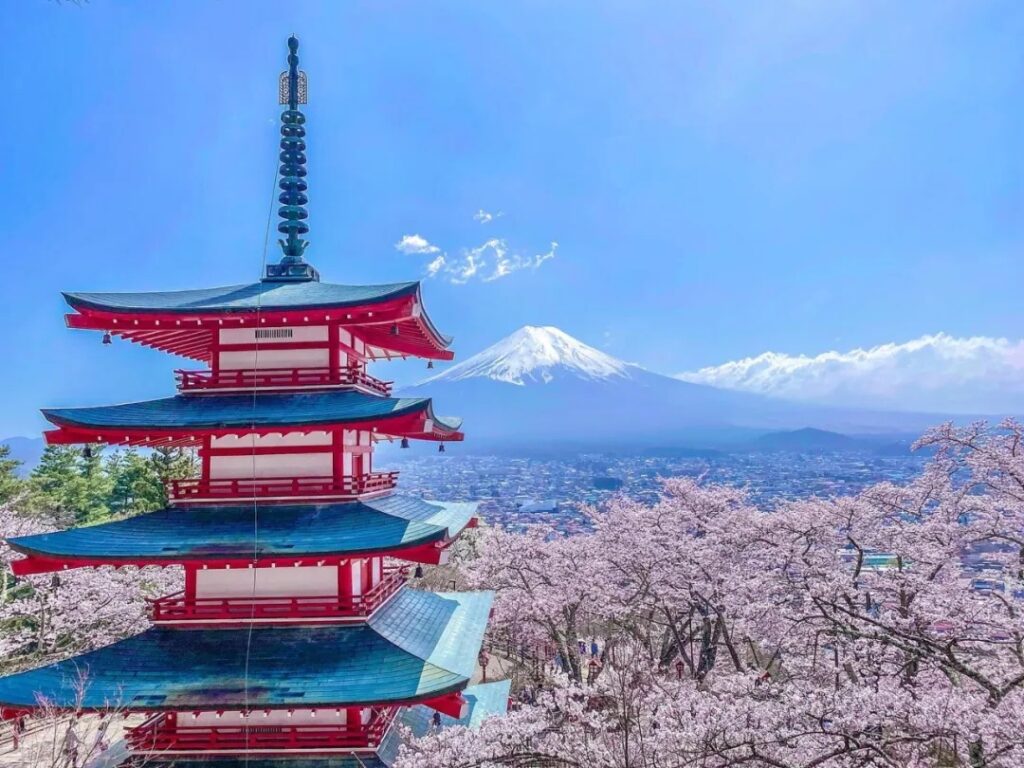
Arakura Sengen Park in Yamanashi Prefecture is perfect for viewing both cherry blossoms and Mount Fuji. Known as one of the “21 Places Every Photographer Must Visit Before They Die,” this is where many iconic postcards featuring Mount Fuji are taken. You can capture the five-storied pagoda, Mount Fuji, and the street scene below in one shot, making it an excellent location for panoramic views of Mount Fuji. Photographers and tourists from around the world come to witness this scene.
Kawaguchiko North Shore
Viewing Period: April 7 – April 13
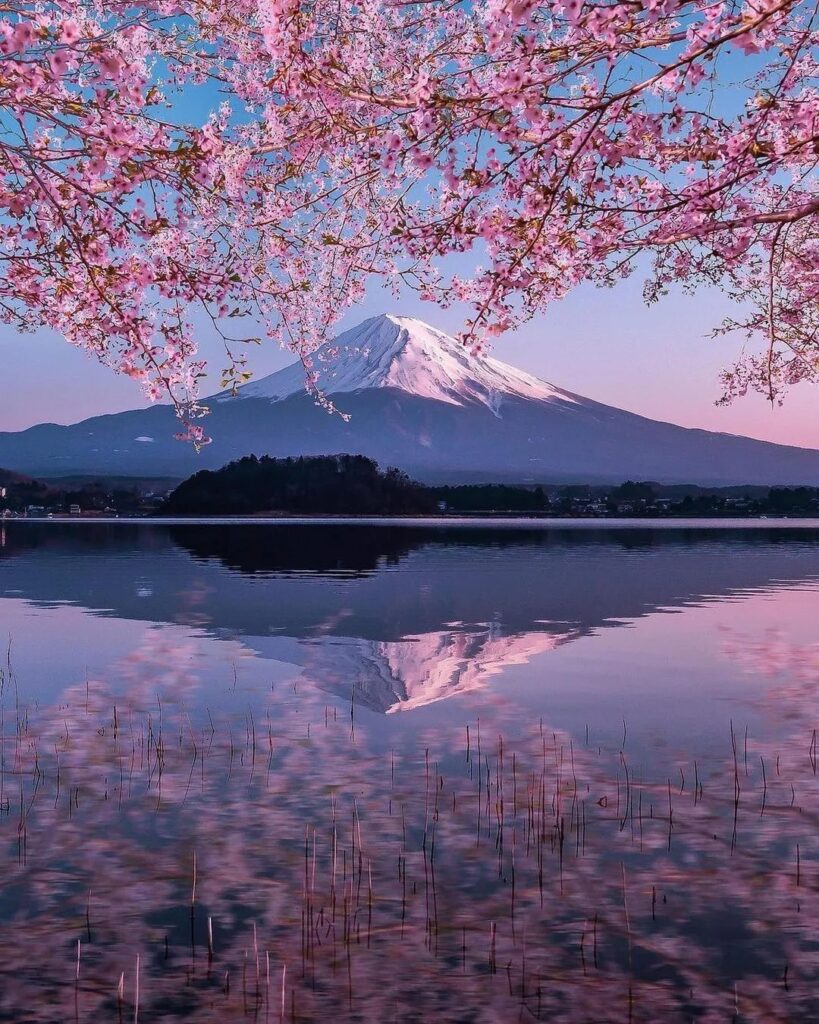
Kawaguchiko, one of the Fuji Five Lakes, offers the most complete and beautiful view of Mount Fuji. The north shore of Kawaguchiko is the best spot for photographing cherry blossoms with Mount Fuji. Known for its views, you can capture the reflection of Mount Fuji in the lake, with cherry blossoms as the foreground, creating a spectacular scene.
Which of these cherry blossom viewing spots have you visited? Which ones are you eager to explore?







